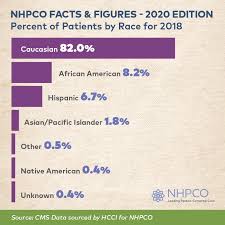
Patients with serious illnesses have experienced cultural differences in advance planning. One reason is that clinicians are often not sensitive to the needs of patients with serious illnesses. They fail to provide culturally appropriate care, and they fail to understand the patient's perspective on pain.
Apart from cultural differences in advance care planning, patients suffering from serious illness have also faced disparities when it comes to end-of-life procedures. In a study of palliative cancer patients in Southern Thailand, the participants identified five EoL care preferences that were important to them. These include relief from distressing signs, disclosure to family, passing on at home, and being fully aware of the situation until death. EoL care was rated as important because it is complete, makes you feel ready to die, helps you cope with your grief, and does not burden family or society. These preferences match the beliefs of Asian societies which prefer to have people die at home over Western ones.

The participants also placed high importance on getting the whole truth about their illness. This includes the information required to make informed decisions and avoid unnecessary pain. The patient's self-satisfaction is enhanced by a good relationship with their family. It also makes it easier to accept death. It improves the patient's senses and interconnectedness. It also makes it less likely that death will occur if there is a good relationship between the healthcare provider and the patient.
Moreover, EoL care is considered important by participants because they prefer to be remembered after they die. They also prefer a peaceful and painless death, but they also want the truth about their illness. Participants also rated EoL procedures important as being able die at home, in one’s own bed, and at one's own pace.
In addition to the five EoL preferences, the participants also rated EoL treatment important as being complete, not burdening families, and being mentally alert until the time they die. Participants also rated EoL care as having a good rapport with doctors, feeling free from psychological and physical discomfort, and being close to family and friends.
An additional study of elderly Thai residents in the Northeastern, Central and Central regions revealed three EoL care preferences. These included relief from shortness or discomfort, mental awareness at the time of death and home funerals. These EoL care preferences were also associated with the participants' age, occupation, religion, and economic status. These preferences were also associated to the participants' past experience with death.

EoL care is essential for reducing ethnic disparities and advance care planning. Participants in the study were happy with end-of-life care. However, many were unable to voice their opinion on resuscitation or dying in hospital. This could be because participants did not have sufficient knowledge of EoL procedures.
FAQ
What's the difference between public health and health policy?
Both terms refers to the policies made by legislators or policymakers to change how health services are delivered. One example is the decision to build an additional hospital. This decision could be made locally or regionally. Local, regional, and national officials may also decide whether employers should offer health insurance.
What are the main functions of a health care system?
The health care system should offer adequate medical facilities to those who require them, at a reasonable price, and ensure that everyone has access to high-quality services.
This includes providing preventive healthcare, promoting healthy lifestyles, as well as appropriate treatment. It also requires equitable distributions of healthcare resources.
What is a Health System?
The entire spectrum of health care is covered, including rehabilitation and prevention. It includes hospitals, pharmacies and community services.
Complex adaptive systems make up the health system. They exhibit emergent properties that can't always be predicted just by looking at the individual components.
It is difficult to manage and understand complex health systems because of their complexity. Here creativity is key.
Creativity allows us to find solutions for problems we don’t know how. We use our imaginations to create new ideas and develop ways to improve things.
Because health systems are constantly changing, they need people who can think creatively.
People who think creatively can help change the way health systems operate for the better.
Statistics
- The health share of the Gross domestic product (GDP) is expected to continue its upward trend, reaching 19.9 percent of GDP by 2025. (en.wikipedia.org)
- For the most part, that's true—over 80 percent of patients are over the age of 65. (rasmussen.edu)
- Over the first twenty-five years of this transformation, government contributions to healthcare expenditures have dropped from 36% to 15%, with the burden of managing this decrease falling largely on patients. (en.wikipedia.org)
- For instance, Chinese hospital charges tend toward 50% for drugs, another major percentage for equipment, and a small percentage for healthcare professional fees. (en.wikipedia.org)
- Healthcare Occupations PRINTER-FRIENDLY Employment in healthcare occupations is projected to grow 16 percent from 2020 to 2030, much faster than the average for all occupations, adding about 2.6 million new jobs. (bls.gov)
External Links
How To
What is the Healthcare Industry Value Chain
The healthcare industry value chains include all the activities involved with providing healthcare services. This includes the operations of hospitals and clinics as a whole, and the supply chain that connects them to other providers. The final result is a continuum in care that begins with diagnosis, and ends with discharge.
The value chain consists of four major components.
-
Business Processes – These are the tasks that individuals perform throughout the delivery of health care. One example is that a doctor might do an examination and prescribe medication. The prescription will then be sent to a pharmacy for dispensing. Each step must always be done quickly and accurately.
-
Supply Chains – The entire network of organizations responsible for ensuring that the right supplies reach those who need them. A typical hospital has dozens of suppliers, including pharmacies, lab testing facilities, imaging centers, and even janitorial staff.
-
Networked Organizations: To coordinate these entities, it is necessary to have some means of communication between them. Hospitals typically have many departments, each with its own set of offices and phone numbers. Every department will have a central point where employees can go for updates to ensure everyone knows what's happening.
-
Information Technology Systems (IT) - IT is essential in order for business processes to run smoothly. Without it, everything could go down quickly. IT also provides a platform for integrating new technologies into the system. If doctors want to integrate electronic medical records in their workflow, they can use secure network connections.